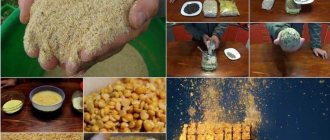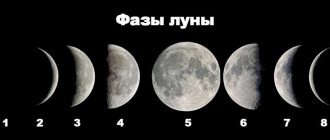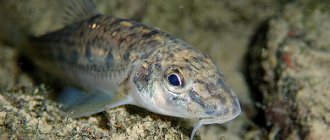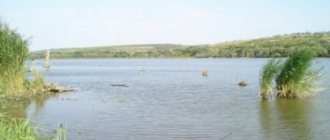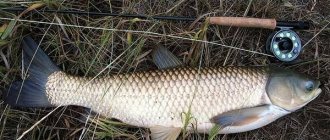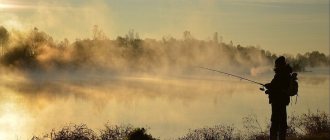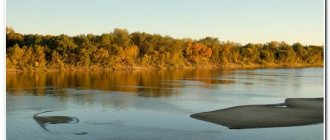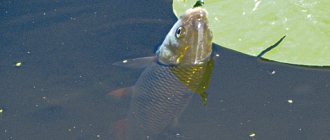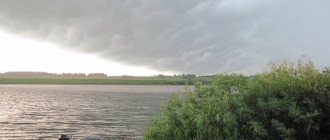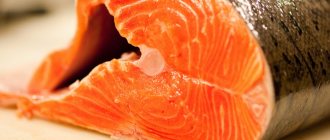What is the fish biting forecast?
The fish bite forecast, like the weather forecast, is based on long-known observations and accurate statistical calculations. The fish bite forecast also includes the results of research by ichthyologists and observations of fishermen. The weather, water conditions, and food supply are constantly changing, and as a result of these changes, the level of activity of the fish changes. The bite of a fish directly depends on its activity, and the activity of fish, like any living organism, depends primarily on environmental conditions and special periods in life. Using centuries of accumulated knowledge about fish habits and modern technologies, it is possible to predict fish bite with a high degree of probability.
Why did we create a bite forecast?
Fishing, although very exciting and exciting, is not an easy activity. A fisherman who wants not only to sit quietly with a fishing rod on the shore, but also to successfully fish with different methods of fishing for certain fish, needs to acquire a huge amount of knowledge. All knowledge and experience accumulate over years of practical fishing, they allow you to meaningfully use the necessary gear, methods and methods of fishing, choose the right fishing location, select bait and bait. Our website and fish bite forecast was created for interactive fishing training for everyone, so that you can quickly gain the necessary knowledge and skills related to fishing.
August
- What to fish for in August? August fishing is done with girders, screens, bottom fishing rods and spinning rods. A variety of baits are suitable - spoons, poppers, worms, flies, small fish, bread crumbs and boiled peas.
- How do fish bite in August? It begins to get colder and the bite intensifies, and there are fewer insects. This is typical for the second half of the last month of summer. Therefore, the bite at the beginning of the month and the bite at the end are very different.
- What fish to catch in August? Asp, pike perch, and ide will produce a successful catch. You can safely go with a fishing rod for bream, carp, and silver bream. Catfish are caught using a bottom fishing rod. The crucian carp stops biting.
- When is the best time for fishing in August? Fishing from mid-August, even closer to its end, is considered more effective. During the daytime the fishing is also consistently good. It is better to try to catch catfish and burbot at night.
- Where is the best fishing spot in August? Rivers are the most suitable place at this time. Stagnant waters in lakes and ponds begin to bloom. And here the fish at this time are limited in light and oxygen. Perch fishing is good in shallow waters.
Man versus machine or fishing blind.
Fishermen who decide to go fishing cannot be stopped. They are not afraid of extreme heat, cold or rain. But for fish, weather conditions are one of the important factors that ensure normal nutrition and, as a result, the presence of a bite. Indirectly, all fishermen predict the fish bite and the results of future fishing, choosing in advance the place of fishing, tackle, bait and bait. Many experienced fishermen have knowledge of the influence of meteorological conditions on the body of certain types of fish. Most fishermen even keep diaries describing weather conditions and fishing results. Trying to compare all the weather factors, statistics from previous years and my experience. It is impossible for a normal person to compare all the factors in his head, and even for several species of fish. This is where modern technology comes to the rescue. The algorithms we have developed process hundreds of data and show you when the fish might bite better. All results of calculating fish bite, for convenience, are depicted in the form of graphs, tips and pictograms.
November
- What to fish for in November? You can now fish using winter gear and spinning rods. It bites well using trolling and a mug. You need to take a large bait, a wobbler and a spinning spoon. It is effective to use bright fish made of silicone. A bottom fishing rod is taken for burbot, luring it to a frog. The saber goes to the worm.
- How do fish bite in November? The predator is very active at this time, especially when the first ice appears. What fish to catch in November? Now is the best time to hunt predatory fish species, pike. A fishing rod in the hands of a fisherman sometimes takes pike perch and small roach. When you go out into deep water you can take bream. The burbot is still biting.
- When is the best time to fish in November? You can start fishing at sunrise. Around 2 o'clock in the afternoon, small fish go to the shores. You shouldn’t go fishing at night, the result will be zero.
- Where is the best fishing spot in November? If you want to catch pike or perch, you need to find a river with fast moving water. Roaches are caught in small currents. You can fish for podust on the rifts. Although there is already ice in some places, it is still quite thin, so you need to choose a place for fishing very carefully.
The influence of cloudiness on fish biting.
Cloudiness affects behavior and bite both directly and indirectly. The activity of fish largely determines the light in the water. A continuous gray cloud cover reduces the illumination of the water column and reduces the activity of fish. In clear sunny weather, the illumination of the water column is maximum, some fish hide in the depths or go into the shadows. In clear sunny weather, the fish hides from bright light because it is afraid that it may become a victim of aggression and therefore does not feed. Other fish, on the contrary, go to shallow areas of reservoirs. In spring and autumn, the best bite will be in clear and sunny weather, as the water temperature rises, and in the heat of summer, on the contrary, the bite improves on cloudy days. In summer, in cloudless weather, it becomes too hot, and the fish bite gets worse.
Tench
Fishing for tench greatly depends on the regional climate; we will look at specific places.
Lin in the Moscow region
In the Moscow region, you should go fishing for tench in April-May . After winter fasting, the tench's appetite grows and the fish becomes most active in mid-spring. It is at this time that you need to go out with a fishing rod for this fish. Tench responds to worms, bloodworms, various larvae, insects, and algae shoots.
From mid-April, tench enter shallow water. As soon as the water warms up enough, the fish goes to depth, where it behaves cautiously and finicky.
To attract tench to a place, you should feed it. Tench's eyesight is poor, but it senses smells well, so the feeding of boiled millet must include live maggots, chopped worms and, as a delicacy, crushed snails.
Tench in Belarus
Spring fishing for tench in Belarus falls at the end of May. The fish that have just spawned begin to eat. The best time for biting is before dawn and after sunset, especially if the weather is cloudy but warm. Fishing with a float rod with dough, worms, and maggots as bait will give an excellent catch. You need to be located in river backwaters, quarries with a muddy bottom, and overgrown ponds.
Lin in the South
The first access to tench can be as soon as the water temperature warms up to 15°C . After a few days, the fish begin to spawn and by mid-to-late May the tench begins to look for food again. At this time, it is caught at a depth of 5-6 meters from a boat.
Use vegetation as bait: shoots of sedge, reed, egg capsules, young reeds. The stem of the plant is cleaned, thinly sliced to 1 cm in length and put on the hook as a “stocking”, covering the sting. Tench is a very cautious fish: when it feels a prick in its lip, it will immediately throw the bait.
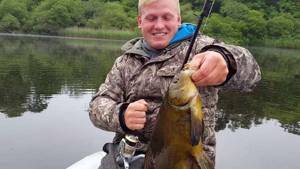
The influence of precipitation (rain, snow) on fish biting.
During a thunderstorm and rain, the fish usually do not bite; the best bite happens 15-20 minutes before bad weather; the fish actively takes the bait when everything in nature calms down in anticipation of a storm. Before prolonged rains, the fish are lethargic and the bite is poor. During periods of prolonged rains, fish bite is possible; fish bite weakly, only during a short cessation of rain. Warm short-term thunderstorm rains promote biting and bring good results to the fisherman, while small short-term rains do not affect the bite.
The influence of water level on fish biting.
Prolonged rains and thunderstorms change the water level very noticeably. With a large and sharp increase in water level, the bite becomes weak. During and after rains, the water rises and becomes cloudy due to mud, the current intensifies, and the bite stops. With moderate rains, a lot of different food that attracts fish is washed into the reservoir with rain, the water temperature decreases, and more oxygen enters the water. In the heat of summer, all this activates the fish and increases its appetite. With a long absence of rain, soil drought is added to the atmospheric drought, the water level decreases, the water quickly warms up to temperatures unfavorable for fish - the fish loses their appetite, the fish bite worsens, as the fish begins to fear that the water may disappear completely and the fish are forced to look for deep places, and sometimes you just go with the flow.
Water level and transparency

You should know that in clear water, fish will always be much more careful than in cloudy water. In clear water, she will look at the bait much more carefully and may refuse to peck at some of the baits for reasons only visible to her. In addition, in clear water the likelihood of being noticed by a predator increases. Therefore, the fish have to go to great depths or look for all sorts of natural shelters in which they can easily escape from the attack of toothy fish.
But don’t rush to conclusions that it’s better to fish in muddy water. The fact is that excessively cloudy water can make it difficult for fish to find bait. Therefore, it is best when the water is a little cloudy, the fish feels protected from the gaze of a predator, but also sees your bait well. If, however, the transparency of the water is very low, my advice to you is to use bait that will be better visible under water, such as maggot, pearl barley or corn.
Also, the intensity of fish bite may depend on changes in water level. Its bite worsens if the water level decreases. The fish begins to panic and fear being left without water at all, so it thinks less about food, but rather about where to find a hole or a deeper place so that water shortages do not threaten it.
If the water level, on the contrary, rises, the fish begins to become more active. Perhaps this is due to the fact that the fish becomes confident that there will be enough water for a long time, and also due to the fact that with the water level, additional food comes into the reservoir from the banks, and the larvae of various beetles and worms are washed out from the ground.
Water levels depend on precipitation, melting snow and ice, drought, and human activity.
The influence of water temperature on fish bite.
Water temperature is a factor in the intensity of fish activity. The water temperature can be used to judge the condition of the fish and its activity. Fish are cold-blooded creatures; their body temperature can only increase due to the temperature of the water in which they live. Each species of fish has its own favorable temperature conditions, under which representatives of the species feel most comfortable. When the water temperature in fish habitats drops or rises beyond the limits of comfortable conditions, fish become lethargic and lose their appetite, and many leave these places in search of a comfortable environment.
The influence of wind direction on fish bite.
Wind has a great influence on fish nutrition and their bite. The change in air temperature is related to the direction of the wind. Different wind directions bring warm or cold air currents over the water. Wind direction is an indicator of processes occurring in the atmosphere and foreshadows possible weather changes. The wind that blows from the northern regions brings with it cold air, actively mixes all layers of water and can stop the bite of heat-loving fish species. But the northern, cold wind stops the bite mainly in autumn, spring and winter. In summer it is hot, and the cool northern wind, cooling the waters, on the contrary, can increase the bite of all types of fish. So, wind can influence the behavior of fish if it leads to an increase or decrease in air temperature, and then water temperature. A sharp change in wind direction also negatively affects the bite. The movements of the cyclone and anticyclone affect fluctuations in atmospheric pressure, which negatively affects the activity of fish.
Weather conditions
If nature does not have bad weather, then from the angler’s point of view this is far from the case. All meteorological conditions, one way or another, affect the fish bite.
Pressure
With increased pressure, fish rise to the surface, so it is best to catch representatives of pelagic species. Pike can also hunt at the top.
When the level decreases, the fish, on the contrary, tend to go deeper. In this case, the bite is usually better for almost all representatives of the ichthyofauna.
The most favorable alignment is observed for several days in a row, despite its indicator. The fish gets used to it and begins to feed more actively. Changes most often reduce the intensity of the bite.
Wind
Optimal for fishing is a slight breeze that raises light ripples on the surface. In this case, the water is saturated with oxygen and the surface situation is masked.
Prolonged calm leads to stagnation, a decrease in the level of dissolved oxygen, and, as a result, low activity of underwater inhabitants.
Strong winds thoroughly mix the layers of water, which negatively affects the living conditions of fish. In addition, fishing becomes very difficult, it is difficult to cast gear.
Rain
Light rains, especially warm ones, have a beneficial effect on the bite. They bring oxygen, mix the top layer, deliver food to the reservoir, washing away various spider beetles from the banks.
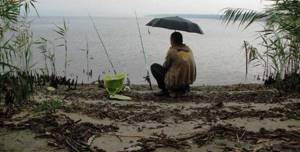
Falling raindrops create ripples on the surface, camouflaging the fisherman located on the shore.
Heavy rain prevents the fisherman from fishing, and also drives the fish to the bottom in secluded places. But after it, especially if the sun comes out, the time will come favorable for fishing.
Temperature
Moderate air temperatures are considered to be the best in all seasons. There is no bite both in extreme heat and in “dog-like” cold. In addition, in such weather the fisherman is uncomfortable on the pond.
The influence of wind force on fish biting.
For anglers, in addition to the direction, the strength of the wind also matters. Moreover, a strong wind not only stops the bite, but is also dangerous when fishing from a boat. A moderate wind, raising light ripples and small waves on the surface of the water, is favorable for fishing. A strong wind, creating large waves, raises turbidity from the bottom in the coastal zone and in shallow water bodies, and can scare away fish. In a strong wave, all the fish move away from the shore to depth. In calm weather, the bite of most fish is completely absent.
Features of the influence of atmospheric pressure on fish biting.
Pressure, or rather its change, affects the behavior of fish. At the moment of rapid change in atmospheric pressure, the fish loses orientation and control of hydrostatic pressure. Fluctuations in atmospheric pressure disrupt the vital balance of fish. When the pressure decreases, the fish sinks into the lower layers of water, and when the pressure increases, into the upper layers. According to observations, fish feel best during periods of stable normal and low pressure, as well as during periods of gradual pressure drop over several days. The fish's well-being noticeably worsens during periods of atmospheric pressure instability and when the pressure rises. The fish adapts to consistently high and consistently low pressure over several days and begins to feed as usual.
September
- What to fish for in September? Bloodworms, worms and fry are the main baits during this period of time. You will have to take a gudgeon to catch chub. The main gear is a spinning rod; in addition to this, you can also fish well with a float rod. In a small river, a jig will help you catch a good catch.
- How do fish bite in September? This month it starts to get colder and the fish go deeper. But on a warm day you can continue fishing as in summer, the fish bite well.
- What fish should I catch in September? Perch and bream can be found under the leaves, gathering in small schools. The easiest fishing now is for roach. Starting from the second half of September, bream, ide and carp are no longer caught, and fishermen also stop seeing catfish. Chub and dace are caught well. During this period, the asp is lured using live bait. The pike uses live bait and is caught quite successfully.
- When is the best time for fishing in September? On warm days, during the Indian summer, when it is cold, the catch will be good. Burbot can be caught using small frogs on rainy and cloudy days, and the best time is towards the end of the month.
- Where is the best fishing in September? When it gets cold in September, the fish move closer to the middle of the reservoir, so you need to get in the boat. Pike are caught in shallow ponds and lakes.
The influence of the moon phase on fish biting.
The Moon, which is closest to the Earth, undoubtedly has a very strong influence not only on humans, but also on all living organisms, including the life of fish. Moreover, it has been noted that the phases of the moon affect predatory and peaceful fish differently. The phases of the Moon strongly influence gravity, creating tension in the water in one direction or the other, which is accompanied by a change in the electrical potential of the inhabitants of the aquatic environment. It has been noticed that during the lunar month there are two periods of good and two periods of bad bite. The fish's bite depends not only on the phase of the moon, but also on the height of its standing above the horizon. The higher the moon is above the horizon, the better the bite. The new and full moons are when the fish bite is the worst. It is also worth considering the effect of the sun on fish biting.
How to effectively use the fish bite forecast.
We briefly looked at just a few of the many factors that influence fish bite. We hope that we were able to convince you that even the most professional fisherman cannot, without the help of a computer, foresee and analyze all the factors influencing the behavior and bite of fish. Our fish bite forecast in no way guarantees you big catches. There are factors that we cannot take into account when processing data. The fish bite forecast on orybe.com makes complex calculations and comparisons with statistics from previous years, determining the likelihood of active fish behavior and successful fishing. Some results of determining the fish bite are presented to you in the form of hints. After familiarizing yourself with the positive and negative factors that influence fish bite, you can decide for yourself which of the factors in your opinion are more significant and what to expect from fishing. Even if the fish bite forecast is poor, you can use the knowledge acquired on the site to your advantage by radically changing your usual tactics and fishing techniques. Knowing in advance about the bad bite of fish, you can, without wasting time in the usual “cool” places, look for fish in their stopping places and try to seduce the fish with a special bait.
Author of the article: Team of authors of the site orybe.com 2015-04-30
